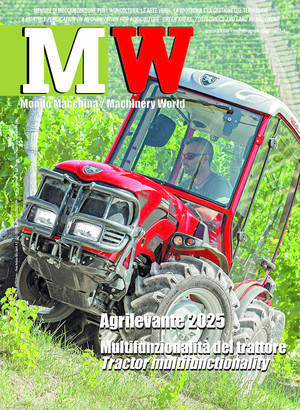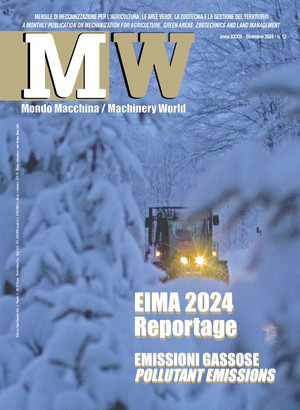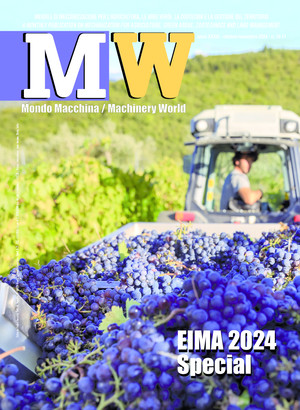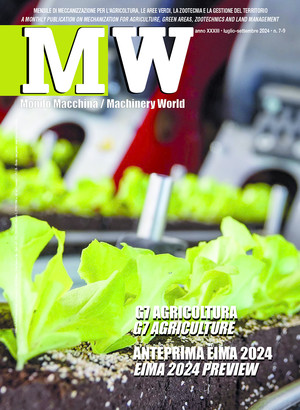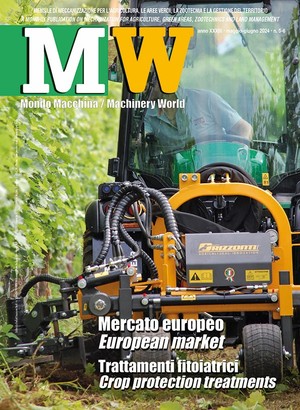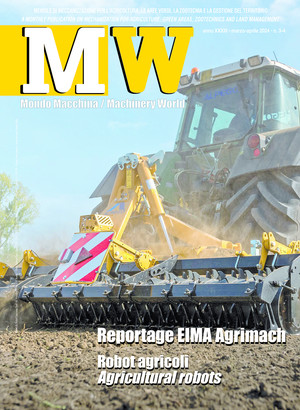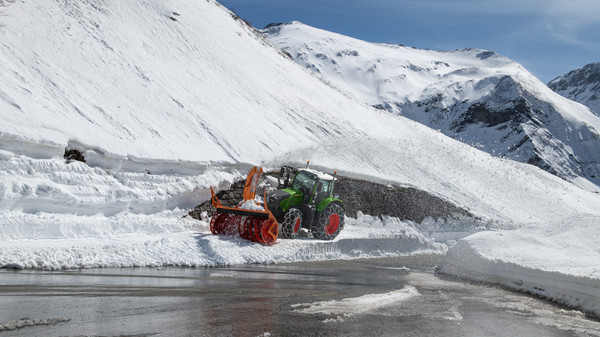
From agriculture to the quarry-construction sector: tractor multifunctionality
Despite being characteristic of the agricultural landscape, modern tractors are extremely versatile machines capable of efficiently carrying out several other tasks in contexts that are more or less similar to the conventional
The tractor is a vehicle often considered to be exclusively for agricultural use, but on the contrary, it has proven to be a very versatile work tool thanks to its ability to deliver power in different forms: mechanical, hydraulic, pneumatic and more recently, also electric. Mechanical control is developed in terms of traction force (multiplied by the forward speed) or by means of power take-off, through which a driving torque is transmitted for an angular acceleration to the working parts of the operating machines, such as fertilizer spreaders, round balers, chippers, mowers, etc. The hydraulic system supplies all those uses whose operation depends on the exploitation of the energy contained in a flow of oil (of mineral origin), pressurized by one or more pumps and managed by means of appropriate hydraulic distributors, to operate, for example, pruners, toppers, defoliators, etc. This oil flow also operates the hydraulic lifter, which, through the three-point hitch, or rather its mechanical terminal, is able to operate the equipment carried, for example, adjusting the working depth and the effort required from the tractor to optimize plowing. The hydraulic system is typically multifunctional, as it also operates the front loader, if installed, including its end tools (bucket, forks, clamps, etc.).
For some time now, a pneumatic option has also been available, i.e., the availability of a pressurized airflow thanks to the implementation of a compressor, useful for the management of trailer braking systems or for adjusting tire pressure when moving from fieldwork to transfers on paved roads. Although to a lesser extent than in the automotive sector, electrification is also spreading to tractors, not exactly as the main or even the only option (although all manufacturers are working hard in this direction), but rather as a source for the operation of devices or equipment mounted on the operating machines. There is no doubt, therefore, that thanks to this remarkable versatility, tractors have long been profitably employed in numerous non-agricultural sectors, an opportunity that allows farmers to expand their operations into other sectors such as forestry, urban green spaces, road and airport runway maintenance, and activities in the quarry-construction site chain.
Forestry. Tractors suitable for forestry use must be particularly robust and able to cope with the difficult conditions of wooded terrain. Compared to traditional models, they have several reinforced parts: in addition to the well-known roll-over protection system (ROPS) for the driver, the cab must comply with regulations against falling objects (FOPS approval) and also be equipped with sturdy metal grilles that protect the windshield, windows and headlights from impacts with branches and debris, to prevent them from accidentally entering the passenger compartment, to form the so-called OPS (Operator Protective Structure). Furthermore, thick metal plates are normally applied to the front of the vehicle to prevent damage to key engines and transmission components in case of contact with branches, stumps and protruding stones. In order to optimize traction and movement on particularly rough surfaces, tractors adapted for forestry use must be equipped with reinforced tires and suitable treads, often with a lugged surface. In particularly difficult conditions, chains or semi-tracks can be applied to the tires to further improve traction.
One of the main characteristics of agricultural tractors adapted for forestry is the ability to extract timber efficiently. The power take-off allows for the efficient operation of a winch or a forestry winch (for retrieving logs) and a chipper (for the production of woody biomass).
Furthermore, for many models originally designed for agricultural use, dedicated hydraulic grapples are available for handling the material, also combined with trailers equipped with stabilizers. The hydraulic system is therefore upgraded to operate this equipment; if this is not possible, an independent hydraulic circuit powered by a pump driven by the PTO can be installed as an alternative.
Again, to improve safety and efficiency in forestry work, sometimes the braking systems are upgraded, rear cameras are fitted for a better view during maneuvers, and additional LED headlights enhance the lighting of the areas surrounding the tractor-implement combination.
Urban green area management and road maintenance. Agricultural tractors are often used in urban areas, too, for the maintenance of city infrastructures, the care of public green areas and street cleaning. A distinctive feature of these models is the color of the so-called "livery," which, by convention, is generally yellow orange, a shade suitable for making the vehicle easily identifiable even in conditions of poor visibility. During the colder months, these tractors (also called “municipal” tractors) are equipped with specific devices to clear snow and ice from the roads. The installation of several types of front snowplow blades allows for the rapid removal of snow accumulations; conversely, snow turbines are particularly effective for clearing larger areas and removing compacted ice. To complete the cleaning operation and to prevent the possible subsequent formation of ice, it is possible to equip the rear of the vehicle with a salt or sand spreader (similar to centrifugal fertilizer spreaders).
Even normal road cleaning can be done with an agricultural tractor. For this purpose, they are combined with mechanical sweepers, with or without a suction system, to remove leaves, dust and debris. In addition, the provision of power-take-off-driven high-pressure washers makes it possible to sanitize public surfaces, benches, monuments and high-traffic areas, reducing the need for manual intervention. Some models can be equipped with water tanks and washing bars for cleaning tunnels, underpasses and street furniture.
Operations in quarries and construction sites. The tractors used in this field are usually very powerful to adequately cope with a particularly challenging operation characterized by very heavy loads and different processes that require extreme pulling forces. Several brands offer models suitable for this purpose. Compared to traditional versions, these vehicles are characterized by important structural and functional modifications to guarantee high robustness and great towing capacity.
The cabs are often equipped with additional protection against falling material and accidental impacts, with armored glass and metal grilles to protect the driver. As in the forestry sector, the underbody is reinforced with protective plates to avoid damage to fundamental components such as the engine, transmission and hydraulic system. From a traction point of view, these models have reinforced tires and are made with compounds that are more resistant to punctures and cuts, which impact against rocks and sharp debris can cause. In some cases, they can be equipped with rubber or steel tracks to improve stability on unstable or muddy ground. The transmission and the four-wheel drive system are optimized to guarantee maximum towing capacity, which is essential for moving heavy trailers loaded with inert material such as sand, gravel or stone blocks. The hydraulic system has been upgraded to cope with the high demand of specific equipment, such as buckets for loading materials, graders for preparing the ground, and demolition hammers for excavation and demolition work. Some models are equipped with quick coupling systems, which allow for the rapid replacement of accessories such as shovels, forks for lifting pallets or winches for dragging.


